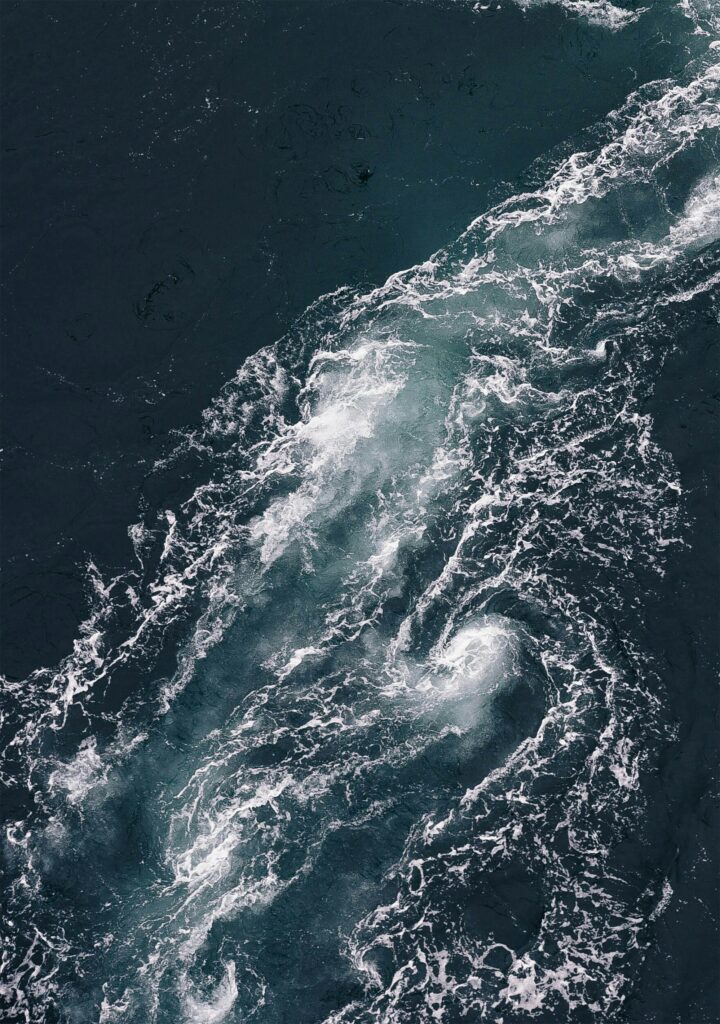At this point in the 21st century, it is difficult to talk about the oceans without immediately thinking of what mankind has done to them — micro-fibers, raw sewage, oil and chemical pollution, over-fishing, rising temperatures and sea levels — threatening and destroying not just the lives and habitats of sea creatures, but also our own. Yet films like Meg 2: The Trench (Wheatley: 2023) want to make us forget that through the deflection of scale. For who can think about the overwhelming size of the environmental crisis when confronted by a 60+-ft prehistoric shark? Failing that, it makes us want to believe that nature can somehow protect itself — not from us, of course, but those greedy billionaires and corporations (the mega-sharks of the capitalist world) that seek to exploit the planet for their personal gain rather than ours.
Much of the above is achieved through the attribution of blame and the identification of who or what is good and bad in the film. Obviously its star, Jason Statham, is necessarily good and in a manly, but sensitive way. Nature, of course, should also be good, although this is complicated by being an area beyond human knowledge or control. The film takes this further, showing it not just as a place beyond our reach, but beyond our time, as well: it literally symbolises an ecological Eden where knowledge of value and exploitation has never reached … until now. It is worth looking at this underwater idyl more closely because it is represented as a kind of “magical kingdom”, a world so far removed from our own that it could be a completely different planet — indeed, the echoes of films like Avatar and Avatar: The Way of Water (Cameron: 2009 & 2022) and its “nature spirit” are explicitly there.
Of course, Meg 2 reminds us it is our planet by the conceit of prehistoric creatures still living there, as the trench has not only been protected from us but from the passing of time itself. In many senses,this is the environment that time forgot and where nature has been left to take care of itself.


But now, humans have arrived and brought capitalism with them and punctured the temporal bubble around this idyllic landscape of the past so that time can flood in … while they suck the mineral wealth out of it. Nature, if we go with its connections to Avatar, is not happy about this and so releases the megalodons, and assorted other beasts, to both protect it and seek revenge on those who have dared to enter its domain.
This mirrors the scenarios from both Avatar films, where human exploitation causes the planetary spirit to instruct its creatures to actively attack and kill the human interlopers. As such, the megalodons, or Megs, should be the good guys, as they are acting on behalf of the earth — not unlike the common cold in H. G. Welles’ The War of the Worlds (1898). Yet two things work against them: first is their size, which oddly translates to making all the oceans of the world instantly dangerous. This is established at the start of the film when we see a Tyrannosaurus Rex being eaten by a Meg in a few feet of water, suggesting all seawater is now deadly. This can also be read as the Meg itself representing pollution, not least in its scale and voracity, making the entirety of the oceans a source of deadly danger to humanity. Second, the Megs have a connection to the past and symbolise a world before (without) humans. This deadly temporal anomaly is at the heart of the Jurassic Park franchise, but the Meg instantly situates itself as far more dangerous when we saw the Tyrannosaurus Rex being eaten at the start of the film[1]. This clash of the past and the present gets more interesting since the director of Meg 2, Ben Wheatley, is arguably best known for his Folk Horror films Kill List (2011) and A Field in England (2013), and transposing the characteristics of such films onto this film yields some curious results.
If we read Meg 2 as a Folk Horror film, many of the plot points work surprisingly well. To begin, we have an isolated landscape/environment — the trench — that is separate from the modern world. It has its own skewed belief system, where nature rules over itself and is made manifest in its “rulers”, the megaladons. We then have the intrusion of the modern world into this isolated place, in the shape of the mining company, which becomes a catalyst for the events that follow. Usually in Folk Horror this involves some form of ritual or “summoning” of the old gods, and in many ways this can be seen to be fulfilled by the megalodons and the other Eldritch horrors released: like the devilish beast brought forth from nature in Blood on Satan’s Claw (Haggard: 1971) or the one being called upon at the end of The Wicker Man (Hardy: 1973). What also happens in Folk Horror is often the sacrifice of a hero of sorts, the one who tries to defend the modern world and its belief systems — Sergeant Howie in The Wicker Man, for example — but is inevitably sacrificed and “consumed” to power the continued presence of the ancient (natural) past in the present. Of course, our “Sergent Howie” in Meg 2 can only be our hero Jonas Taylor (Jason Statham), though there is no way that he can be sacrificed to the “gods” of the past at the film’s end with the possibility of another sequel in the works. That leaves our Folk Horror reading at a bit of an unfulfilled impasse.
Perhaps a better reference point is the 1970s and the “animal revenge” films that evolved from Jaws (Spielberg: 1975). Movies like Jaws, Grizzly (Girdler: 1976), Tentacles (Assonitis: 1977), and Nightwing (Hiller: 1979), etc. all feature a human hero (inevitably a man) that saves the day, even in the face of corrupt officials and money-grabbing corporations. Yet, they tend to be Everyman-type figures, often thrown into the situation and doing their job or the best they can to save family, friends, or those they feel responsible for. Statham is slightly different in that he is far more of a professional “hero”. For all the pretense in the film of him being down-to-earth he is not only a specialist, and built like he is from a special forces unit, his cinematic pedigree positions him as superhuman. If Sergeant Howie was unlikable and clueless in the face of his “enemy”, we already believe that Statham can beat a 70-ton shark with his bare hands.


Statham can save us from the dark forces of nature — even while it embodies a world before pollution — and even from the “jaws” of the corporate sharks that look to consume both us and the environment we depend on. Of more concern, though, is that Statham is not “one of us”, as the heroes of the 1970s natural horror often were. Instead, he is a savior who saves the world for us, so that we do not need to do anything and can carry on partying at the beach — coincidently, beach scenes appear in both Meg films. This is perhaps the most worrying aspect of a film that, through size and scale, purposely tries to deflect us away from its core message that, in the face of the world’s oceans becoming deadly places to be in, or even near, we do not need to do anything but can relax on our beach chairs and watch the show of a single hero saving us all. In the face of the mega-shark of impending environmental catastrophe, this is possibly the most dangerous thing we can do.
[1] The importance of size in the Meg (Turtletaub: 2018) is explored in Craig Ian Mann’s essay in The Deep: A Companion (2023).
The Deep: A Companion is now available here: https://www.peterlang.com/document/1339843

 de
de  fr
fr 









